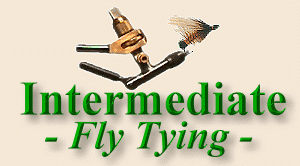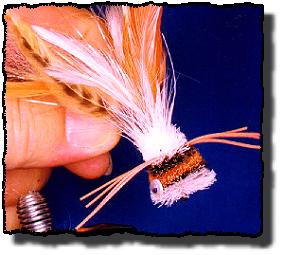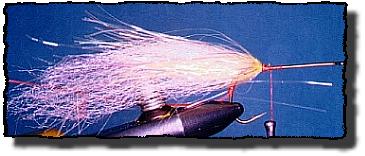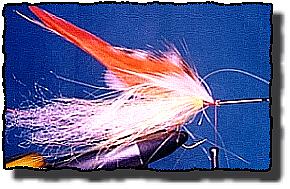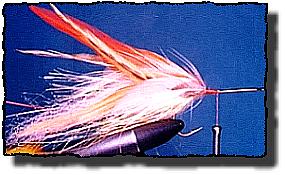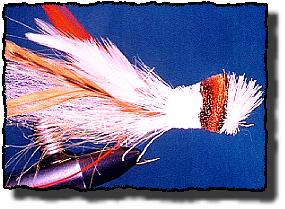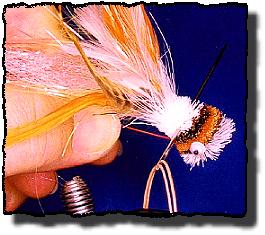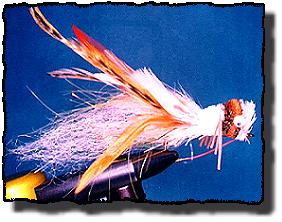How did you do with the simple bass bug? I hope you practiced a little
bit because we'll take off where we left off last time. This time, we'll
add eyes and rubber legs to our fly. Since standard deer hair bass bugs
have these nice additions, so should ours, don't you think?
I'm guessing some folks are having a hard time trimming the hair head.
A good pair of sturdy, sharp scissors are essential to trimming deer
hair. So is a good, sharp razorblade. The scissors I use were purchased
at a fabric store, not a fly tying shop. I purchased a pair of Ginger
scissors because they are extra sharp and extra strong. Dr. Slick makes
some scissors that will work well, but most of the scissors you find in
fly tying shops just don't have the strength or hold an edge as well as
the Gingers I use. If you're having problems with smooth cuts on deer
hair, try to find a good pair of solid, sharp scissors. They make a
world of difference when you need to trim deer hair.
I buy razor blades in a small carton so I always have a fresh, sharp
blade handy. Some folks like to use double-edged blades because they get
twice the cutting edge for fewer dollars. Double-edged blades also flex
better so you can contour the head of your fly easier. I'm usually
clumsy enough to remove a finger or two during the trimming process, so I
use the safety blades. You'll have to make the right blade choice based
on your dexterity and bravery.
While you're visiting the fabric shop, pick up a large carpet needle.
You'll need this needle to sew rubber legs through the deer hair head.
Some folks try to tie the rubber leg material in while spinning the hair
for the head, but this makes trimming a problem and it's hard to keep the
legs where you want them on the head. By sewing the legs through the
head and gluing them in place you save time and trouble. And, you can
get a better trim on the hair without trying to work around the rubber
legs.
Since you're spending so much time in the fabric shop, you might want to
look for doll eyes. Most fabric stores I've visited carry some craft
supplies too. I've found doll eyes and prismatic eyes in many colors and
sizes in the fabric and craft stores near my home. If you don't have a
good fly shop near your home, you might find some of the items you want
at a craft or fabric store.
I haven't talked about how to fish deer hair bass bugs yet. If you fish
with spinning or casting tackle, you've most likely had problems with
weeds. One serious problem with conventional bass tackle is that you
must reel the lure back after you cast it. That makes fishing pockets in
the weeds difficult with conventional tackle.
Deer hair bass bugs don't have to be reeled back to the boat or shore
before you can make another cast. With fly tackle, you can cast into an
opening in the weeds, twitch the fly a few times, and if nothing hits you
can pick the fly up and cast it to a new location without reeling the
lure back to you. That makes the deer hair bass bug ideal for heavy
cover with pockets of open water. A flyfisher can fish the heaviest
cover, hitting all the open pockets where the big boys hide without
reeling in one foot of line.
Let those hardware guys flog the water with their metal and plastic
lures. While they are casting to water every other hardware guy has
fished, you can be probing the pockets where the big boys decided to hide
from the noisy stuff the other guys were throwing. And, since your fly
floats, you can let it sit there for a while, tempting that old monster
with a wiggling and twitching motion he will eventually find impossible
to ignore.
Ready for another fly?
|
